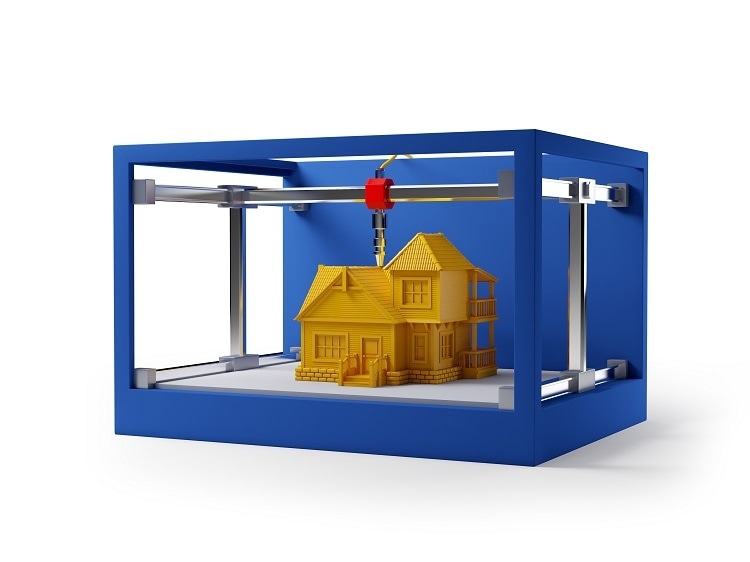
Image Credits: Ilterrorium/shutterstock.com
The 3D Printer has come a long way since its first prototype in 1984. 3D printing has been able to process bridges, steel spans, small to large objects, and now homes. In order to achieve three dimensional objects, the printer generates a series of processes that join and solidify fragments of material via computer control - ultimately, these processes print 3D objects. Each bed of material, most likely liquid molecules and powder grains, are molded together to reach the desired object structure.
The improvements seen in 3D printing during the last thirty years has encouraged architects, scientists, designers, and other professions to test the device’s limits, as well as the world problems it can solve. 3D printing is not limited to small household objects or a 12.5 meter bridge; these printers are remarkably advanced and their functions can work at a grander scale - specifically, house building and construction.
Why It Needs to Change
According to the Annual Homeless Assessment Report (AHAR) to Congress last year, approximately 553,000 people suffered from homelessness in the United States; about 36,000 of those people were under 25, and the increase of people suffering unsheltered homelessness was the single reason for the national increase in all people experiencing unsheltered homelessness.
Worldwide, there are an estimated one billion people who fail to have access to sufficient housing. According to a lead house-hunting organization, Zillow, the average home in the United States costs over $200,000 and takes no less than 12 to 24 weeks to build. These financial burdens and lengthy schedules make room for better innovations that are more cost effective and less time consuming.
3D Printing has altered the way many appliances, engines, and machinery is made and potentially, the way we build houses. In 2016, Spain opened the world’s first three dimensional printed bridge to the public, Amsterdam printed a steel span to traverse a canal, and the Netherlands are opening up the first three dimensionally printed homes to rent. 3D printer’s gradual advancement in building is snowballing a trend that could improve construction’s entire practice - making shelter more accessible to those who find it inaccessible, while also generating efficient practices and forgiving costs.
The 3D Printer in Future Construction
Large-scale 3D printers are required to build infrastructure and tackle construction. At a large-scale from a crane, these printers can release rushes of quick-setting concrete and create groundwork with each coating. Current construction becomes extensively laborious and financially crippling as it necessitates skilled workers to mix and pour down concrete; however, since 3D printers can constantly form new materials for each piece of the project, construction workers and builders can use a single 3D printer to operate several projects at once - minimizing the time and money spent.
San Francisco-based nonprofit, New Story, has partnered with the Austin-based construction company, ICON. These two companies merged together to construct 100 homes in El Salvador via 3D printing this year. New Story’s co-found Matthew Marshall claims that the 3D Printer, known as “The Vulcan,” can create a concrete three-room, one-story home in one day for the cost of $4,000. This drastically contrasts the usual $200,000 price tag and three to six month building schedule.
Conclusion
The low-cost and environmentally friendly methods of 3D house printing can cultivate a better world that both accommodates homeless people and mitigates the harsh impacts of construction. If 3D printing reaches its potential, by eliminating the need for specialized skill and unlimited funding, it can help restore disaster areas and build up developing countries. The printer does not require forms, excessive licenses, or exceptionally skilled workers - it is a product that enables the same results with reduced labor and fewer resources.
The discussion surrounding the success of 3D printing is becoming more widespread and experimental; professionals believe that if these small projects continue to reach higher and higher success rates that habitats can be built not only all over the world, but beyond earth as well.
Sources and Further Reading
Disclaimer: The views expressed here are those of the author expressed in their private capacity and do not necessarily represent the views of AZoM.com Limited T/A AZoNetwork the owner and operator of this website. This disclaimer forms part of the Terms and conditions of use of this website.